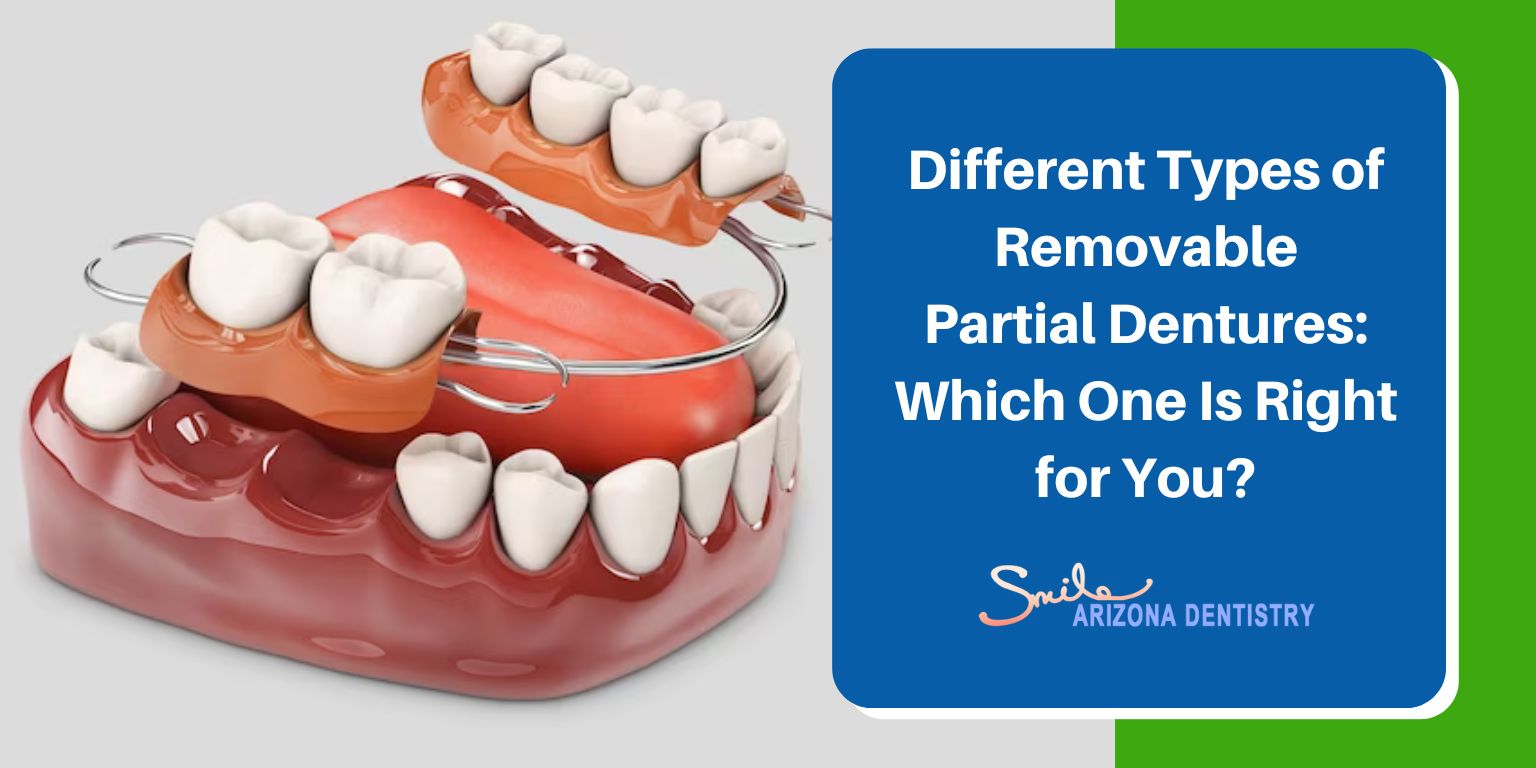


Removable partial dentures are an excellent choice for replacing missing or damaged teeth. As they mimic your natural teeth, you can restore your natural facial appearance and aesthetics while achieving optimal oral health and smile. However, before choosing the removable partial dentures, it is crucial to know the options available and how to choose the right one.
Let us discuss the different types of removable partial dentures, their pros and cons, and which one is the best fit for your smile.
A removable partial denture is designed to replace one or more missing teeth in one or both jaws. It is custom-made from acrylic, metal, or a combination of both. These dentures are held in place with adhesive or clasps that fit around your existing teeth.
Removable Partial Dentures are usually utilized to address missing teeth, despite the reasons for tooth loss. For example, they may be recommended as a temporary solution after a tooth extraction or in preparation for additional oral treatments. Removable partial dentures are commonly called 'flippers' as they are lightweight, helping you effortlessly 'flip' them out of the mouth.
The purpose behind their design is to serve as a temporary solution for dental restoration. While your dentist might suggest a removable partial denture as a permanent dental fixture, this is rare. In most cases, patients receive a removable partial denture as they await a more permanent alternative.
These dentures are premium resin teeth attached to gum-colored acrylic, fitted onto a precise wironium or titanium cast metal framework. The metal framework is attached to existing teeth with metal clasps, making the dentures fit snugly and precisely.
You can consider this if you:
These dentures are made of nylon-based resin material, which serves as the denture base and structural support for the partial. The clasps are customized to match the gum tissue, seamlessly blending in and connecting the partial to the natural teeth.
You can consider this if you:
Flippers remain convenient for replacing one or two missing teeth, particularly in the mouth's front area. Depending on the purpose of the dentures, either acrylic resin or flexible valplast is used to create flippers.
You can consider this if you:
These dentures, crafted from pink acrylic resin, are mainly used as a temporary tooth replacement option until a permanent solution is created. They close the gaps from tooth loss and are held in place by metal clasps attached to the natural teeth.
You can consider this if you:
These dentures use tooth-colored resin for the framework and supporting clasps, seamlessly blending with your natural teeth and enhancing your facial appearance.
You can consider this if you:
These dentures combine the features of Valplast flexible dentures and cast metal partial dentures, providing patients with comfort, aesthetics, and enhanced stability and security. Using a blend of materials, tissue-colored clasps are created to close visible areas, ensuring metal clasps remain unnoticeable.
You can consider this if you:
Pros:
Cons:
Neither are all dentures created equal nor does any denture fit everyone. So, the best denture for you depends on your:
So, it is better to talk to a dentist, as they can assess your needs and goals and recommend the best-fitting denture for you.
At Smile Arizona Dentistry, we understand that a missing tooth can make you self-conscious about your smile. That's why we offer high-quality, cost-effective removable partial dentures that can help you restore your teeth and redefine your smile. From initial consultation to final fitting, our dentists will work closely with you to ensure a comfortable and stress-free experience. Contact us today to learn more about removable partial dentures.
Ans. As oral health needs and goals vary from person to person, it is good to discuss with your dentist to find the right partials for you.
Ans. Not necessarily. Some dentures don’t require metal clasps to stay in place.
Ans. You may experience problems, such as difficulty eating and speaking, irritation to the gums, and pressure on the adjacent teeth. However, these will subside once you get used to dentures.
Ans. Removable partial dentures can last for 5 to 10 years on average.
Ans. Yes, you can. However, you must start with soft foods and chew slowly. Once you get used to dentures, you can resume your regular diet.